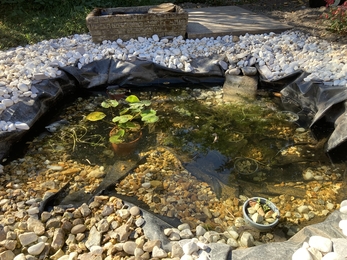The British summer weather can be a mixed bag, and this year has certainly been variable! Hot sunny days are an obvious cue for us to top up bird baths, check hanging baskets aren’t drying out, and to pop a saucer of drinking water out for insects and small mammals. It is easy to forget, however, that although overcast days may look dreary, conditions can still be powder dry creating challenging conditions for many species. Providing water will create an oasis for wildlife, whatever the weather!
As well as providing fresh water to sustain garden visitors, remember no one likes drinking from a grubby mug. It is really important to keep bird baths and other features clean. An old brush is all you need – so give them a regular scrub to prevent the spread of disease.









